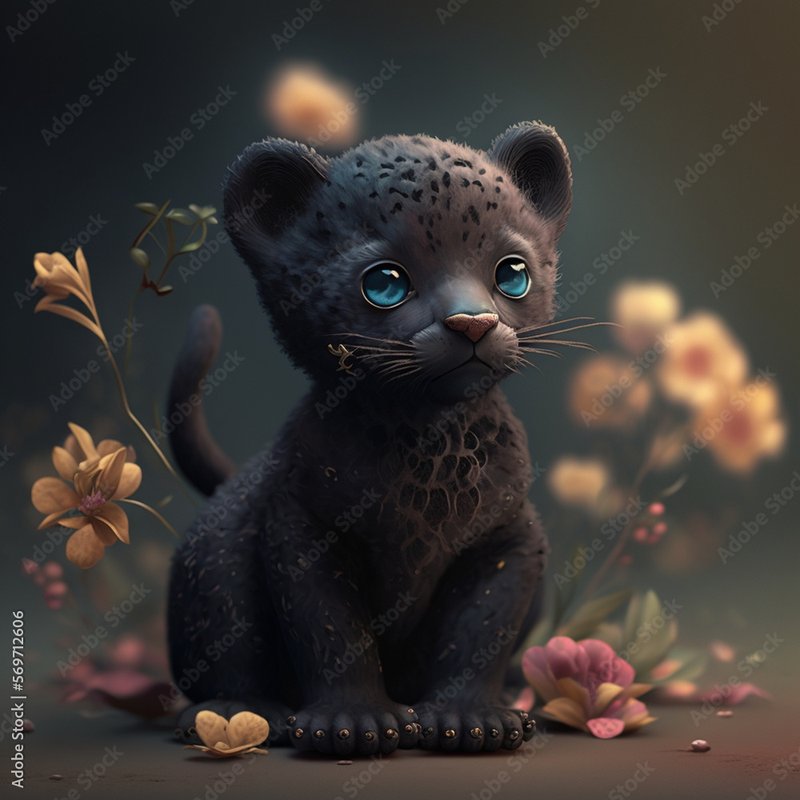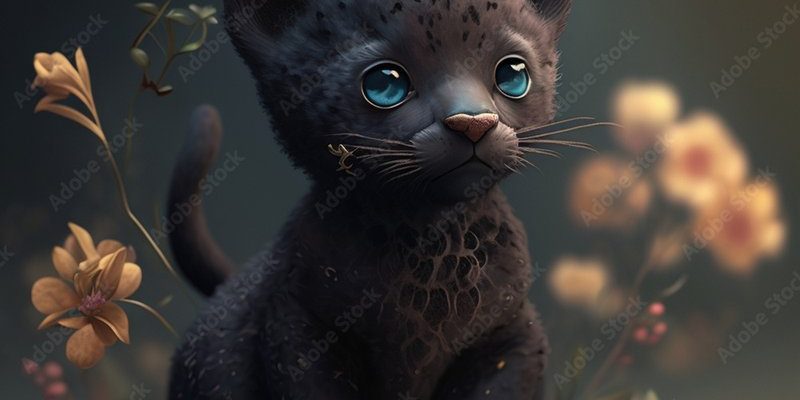
Imagine the earth millions of years ago, with ancient landscapes and climate shifts shaping the lives of early mammals. Panthers, like other big cats, have evolved through a myriad of changes, adapting to their environment in ways that make them the apex predators we admire today. This article will take you through the journey of the panther—its ancestors, adaptations, and the challenges it faces in a rapidly changing world. So, grab a cup of coffee, and let’s dive into the evolutionary legacy of the panther.
The Panther’s Origins
Let’s start at the very beginning. The panther, specifically the black panther, is actually a melanistic variation of big cats like the leopard and the jaguar. To put it simply, melanism is when an animal has a greater-than-usual amount of dark pigmentation. This adaptation can be beneficial, especially in dense forest environments where darker fur helps with camouflage.
The ancestors of modern panthers trace back to the Felidae family, which dates back about 10 to 15 million years. Imagine a world where these early cats roamed alongside massive prehistoric creatures. Over time, these ancestral cats began to evolve, their physical traits and hunting behaviors shifting to adapt to changing landscapes and prey availability.
Panthers, as we know them, diverged from their ancestors and began to inhabit various parts of the world. They split into different species, with some adapting to life in trees while others became ground hunters. It’s truly remarkable to think about how these changes helped shape the versatile and resilient creatures we see today.
Physical Characteristics and Adaptations
Now, let’s talk about what makes panthers so unique. One of their most striking features is their powerful build. Panthers are muscular, with strong legs that enable them to sprint quickly or leap great distances. Think about a well-built athlete; that’s what a panther embodies in the animal kingdom.
Another fascinating aspect is their exceptional night vision. Panthers are primarily nocturnal, meaning they hunt at night. Their eyes are adapted to low light, allowing them to spot prey in near darkness. It’s like having built-in night-vision goggles! This skill is essential for stalking prey in dense forests where visibility is limited.
The most iconic feature of a black panther is, of course, its dark coat. This isn’t just for looks; it provides effective camouflage in their natural habitat. A black panther can blend seamlessly into the shadows of the jungle, making it easier to ambush unsuspecting prey. Plus, their long tails aid in balance, helping them navigate through trees or uneven terrains with grace.
Habitat and Distribution
Panthers are found in various habitats around the world, from the lush rainforests of Southeast Asia to the dry, open savannas of Africa. However, their habitats are increasingly threatened by human activity, primarily deforestation and urban expansion.
In the Americas, the Florida panther is a notable subspecies that has faced significant habitat loss. These panthers once roamed across the Southeastern United States, but their range has shrunk dramatically. Today, they’re primarily found in the swamps and forests of southern Florida. Sadly, the Florida panther is considered an endangered species, emphasizing the urgent need for conservation efforts to protect their remaining habitat.
Conversely, leopards and jaguars, the species from which black panthers are derived, enjoy a more extensive range. They thrive in various environments—jaguars in the rainforests of Central and South America and leopards in African savannas. This adaptability showcases the diversity within the panther lineage and highlights their ability to survive in different ecosystems.
Behavior and Social Structure
Panthers are solitary creatures, preferring to live and hunt alone. This behavior is quite different from some other big cats, like lions, that thrive in social groups called prides. The solitary nature of panthers allows them to be stealthy hunters. They stalk their prey quietly, carefully selecting their moments to pounce.
While they are mainly solitary, panthers have established territories. Male panthers often have larger territories that overlap with those of females. This overlapping can lead to fascinating interactions during mating seasons. A male may roam his territory searching for a mate, while females maintain their own ranges, raising their cubs in the safety of dense cover.
You might be wondering how they communicate. Panthers use a range of vocalizations, body language, and scent markings to convey messages. From soft growls to loud roars, these sounds can signal everything from territory boundaries to mating calls. Their keen sense of smell also plays a crucial role in marking territories and attracting potential mates.
The Role of Panthers in Ecosystems
Every predator has a crucial role in its ecosystem, and panthers are no exception. As apex predators, they help regulate the populations of their prey species, maintaining a balance in their environment. Imagine a landscape where an overabundance of herbivores like deer could lead to overgrazing, which would then impact the entire ecosystem. By keeping prey populations in check, panthers help preserve healthy habitats for numerous other species.
Moreover, the presence of panthers can indicate a healthy ecosystem. When you see a thriving population of these majestic cats, it often means that the environment can support various life forms. Their decline can serve as a barometer for environmental health, signaling that changes need to be made to protect the larger ecosystem.
In places where panther populations are stable, we see benefits ripple through the entire food web. It’s a reminder of how interconnected life is and how the survival of one species can impact countless others.
Conservation and Challenges
Despite their remarkable adaptations and significant ecological roles, panthers face numerous challenges. Habitat loss is the most pressing issue, as human activities continue to encroach on their territories. Deforestation, urban development, and agriculture threaten these majestic creatures, leading to fragmented habitats and reduced populations.
Another challenge is poaching. Panthers, particularly leopards and jaguars, are often hunted for their beautiful pelts and body parts, which can fetch high prices on the illegal wildlife market. Conservation efforts are underway to protect these animals from such threats, but they require ongoing support and commitment.
You might be curious about what’s being done to help. Organizations and governments are working together for conservation initiatives. These include habitat restoration, legal protection for endangered species, and education programs to raise awareness about the importance of panther conservation. It’s a team effort, and every bit of support helps!
The Future of Panthers
The future of panthers is still uncertain, but there’s hope. Conservation programs focusing on habitat protection and restoration are essential. These initiatives can ensure that panthers have safe spaces to live, hunt, and thrive.
Additionally, increasing public awareness about the plight of panthers can lead to more significant support for conservation efforts. People are often surprised to learn how close these creatures are to extinction, and this awareness can drive action.
Innovative approaches, like creating wildlife corridors that connect fragmented habitats, can also play a role in ensuring the survival of panthers. These corridors allow them to move freely between different areas, access resources, and maintain healthy genetic diversity within populations.
In conclusion, the evolutionary history of the panther paints a picture of resilience and adaptation. From their ancient ancestors to the powerful predators we see today, they remind us of the incredible journey of life on our planet. Understanding their story is not just about appreciating their beauty but also recognizing the responsibility we have to protect them for future generations. Every effort counts in preserving these magnificent creatures and the ecosystems they inhabit.

